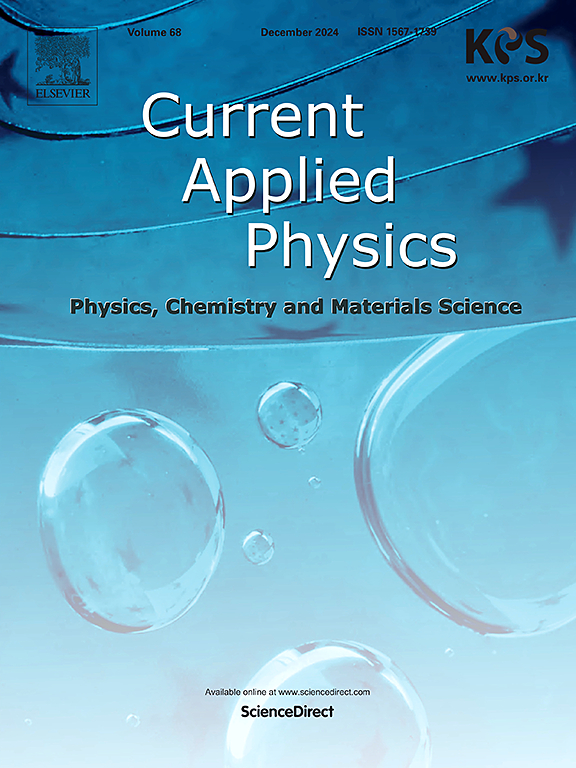Dirac nodal line and pseudo-gap in 1T-VS2 single crystal
IF 3.1
4区 物理与天体物理
Q3 MATERIALS SCIENCE, MULTIDISCIPLINARY
引用次数: 0
Abstract
Vanadium disulfide (VS2), one of transition metal dichalcogenide (TMDC) family, attracts elevated interests for its charge-density wave phase transition, ferromagnetism, optoelectronic switching, and catalytic reactivity, but the topological Dirac surface states have not been observed yet. Here we report the Dirac nodal line states of VS2 single crystals via angle-resolved photoemission spectroscopy (ARPES) measurements. ARPES analysis reveals that Dirac nodal line surface states are extended from the Μ point toward the Γ point with energy of −1.1 eV. Comparison with the other vanadium chalcogenides shows monotonic energy shift of the Dirac states depending on the spin-orbit coupling strength of the chalcogen atoms. Furthermore, we studied the temperature-dependence of pseudo gaps near both the M and Γ points. Our observations provide experimental evidence of topological electronic structures, contributing to the understanding of the correlated TMDC systems and their potential in switching devices, optical saturable absorber, and electrocatalysis.

1T-VS2单晶中的Dirac节线和赝隙
二硫化钒(VS2)是过渡金属二硫族(TMDC)中的一种,由于其电荷密度波相变、铁磁性、光电开关和催化反应性等特性引起了人们的关注,但其拓扑狄拉克表面态尚未被观察到。本文报道了通过角分辨光发射光谱(ARPES)测量的VS2单晶的狄拉克节线态。ARPES分析表明,Dirac节点线表面态从Μ点向Γ点延伸,能量为- 1.1 eV。与其它含钒硫系化合物的比较表明,狄拉克态的单调能移依赖于硫原子的自旋轨道耦合强度。此外,我们还研究了M点和Γ点附近伪间隙的温度依赖性。我们的观察结果提供了拓扑电子结构的实验证据,有助于理解相关的TMDC系统及其在开关器件、光学饱和吸收器和电催化方面的潜力。
本文章由计算机程序翻译,如有差异,请以英文原文为准。
求助全文
约1分钟内获得全文
求助全文
来源期刊

Current Applied Physics
物理-材料科学:综合
CiteScore
4.80
自引率
0.00%
发文量
213
审稿时长
33 days
期刊介绍:
Current Applied Physics (Curr. Appl. Phys.) is a monthly published international journal covering all the fields of applied science investigating the physics of the advanced materials for future applications.
Other areas covered: Experimental and theoretical aspects of advanced materials and devices dealing with synthesis or structural chemistry, physical and electronic properties, photonics, engineering applications, and uniquely pertinent measurement or analytical techniques.
Current Applied Physics, published since 2001, covers physics, chemistry and materials science, including bio-materials, with their engineering aspects. It is a truly interdisciplinary journal opening a forum for scientists of all related fields, a unique point of the journal discriminating it from other worldwide and/or Pacific Rim applied physics journals.
Regular research papers, letters and review articles with contents meeting the scope of the journal will be considered for publication after peer review.
The Journal is owned by the Korean Physical Society.
 求助内容:
求助内容: 应助结果提醒方式:
应助结果提醒方式:


